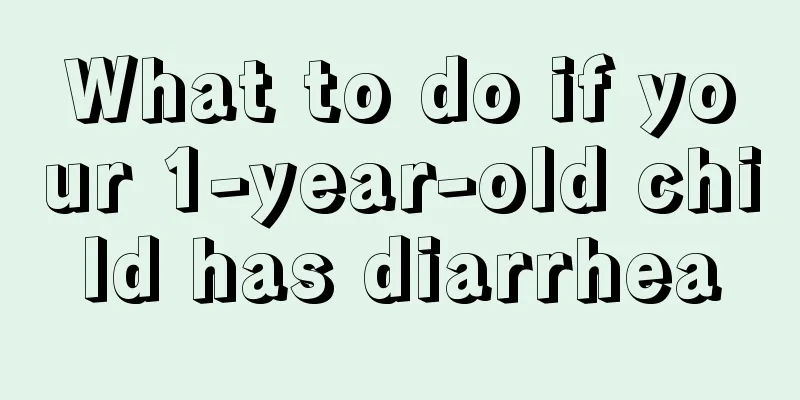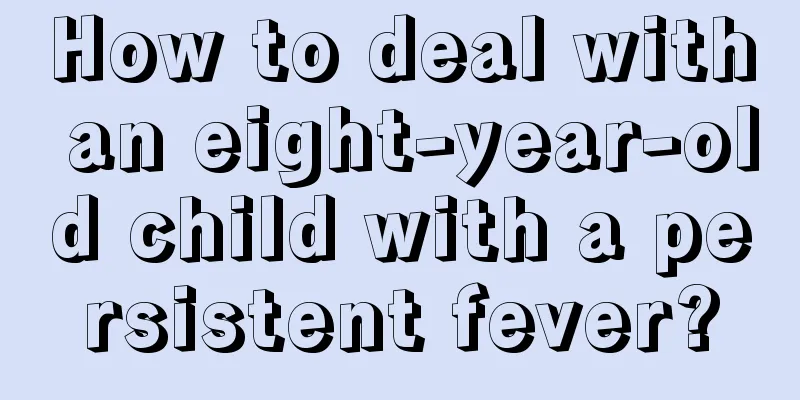What to do if your 1-year-old child has diarrhea

|
Pediatric diarrhea is a common pediatric disease caused by multiple pathogens and factors, characterized by increased frequency of bowel movements and changes in stool characteristics. It is common in infants and young children aged 6 months to 2 years old. It may occur throughout the year, but is most common in summer and autumn. It can be divided into infectious and non-infectious types. Only by distinguishing different symptoms and choosing the right diet can you achieve the desired results. So what should we do if a 1-year-old child has diarrhea? Let us find out through the following article content. Diarrhea caused by food poisoning: Children have symptoms such as abdominal distension, abdominal pain, loss of appetite, bad breath, etc. They often cry before diarrhea, and their stools are sour and smelly, with undigested milk lumps. The following dietary treatments can be used: 1. Apple soup: Take an apple and a little salt. Wash the apples, chop them with the skin, add 250 ml of water and salt, boil them into a soup and drink it at will. One dose daily. Children over 1 year old can eat applesauce. 2. Scorched hawthorn and malt drink: take 30 grams each of hawthorn and malt, and 15 grams of brown sugar. First, fry the hawthorn and malt over low heat until they are slightly charred. Remove from heat and add a little wine and stir. Place on the stove and fry until dry. Then add 200 ml of water and boil for 15 minutes. Remove the residue, add brown sugar and bring to a boil. Drink warm in several times, one dose per day. Wind-cold type diarrhea: Children have abdominal rumbling and pain, sometimes accompanied by fever, runny nose and other symptoms. The stool is thin, foamy, light in color and has no odor. The following dietary treatments can be used: 1. Ginger tea: Take 10 grams of ginger, 3 grams of tea leaves, and a little brown sugar. Slice the ginger, boil it with tea leaves and appropriate amount of water, add brown sugar after boiling, and drink it at will. One dose daily. 2. Glutinous rice and Atractylodes lancea porridge: take 30 grams of glutinous rice, 12 grams of Atractylodes lancea, and 6 grams of Atractylodes lancea. First, stir-fry the glutinous rice briefly, then add appropriate amount of water to Atractylodes macrocephala and Atractylodes lancea and boil for 15 minutes, then remove the residue and take the juice, then add the glutinous rice to cook porridge for consumption. One dose daily. What should I do if my 1-year-old child has diarrhea? After reading the above article, I believe you have gained a certain understanding. Non-infectious diarrhea in children is mainly caused by improper feeding, such as eating too much, too little, too hot, too cold, sudden changes in food types, etc. It can also be caused by food allergies, climate change, and lack of disaccharidase in the intestines. Therefore, parents should feed their children oral rehydration salts containing multiple electrolytes and glucose in a timely manner. |
<<: How to treat bronchial pneumonia in 3-year-olds
>>: Things to note when your 1-year-old baby is teething
Recommend
Massage techniques for children with constipation
Children's digestive systems are not fully de...
What is the reason for children's poor memory? Mom, do you know?
Children with poor memory can give parents a head...
Detailed introduction of boys with more flesh on their faces
With the continuous improvement of living conditi...
Symptoms of viral cold and fever in children
Children have a viral cold, which is a particular...
Why does my child have leg pain in the middle of the night?
Some parents always encounter the situation that ...
What are the precautions for letting your baby swim?
Nowadays, most families have only one child, and ...
What are the symptoms of mild encephalitis in children?
Encephalitis is a disease that people are very af...
Diet therapy for one-year-old baby's nose bleeding
Since babies around one year old are still young,...
How to make fungus for babies
Fungus is rich in many minerals, which can detoxi...
Why does a twelve year old still wet the bed?
Generally speaking, children over three years old...
What causes baby's leg pain?
Many babies complain of leg pain when they are yo...
What should I pay attention to after the surgery?
Infants are more prone to hernia. For some childr...
When does the fontanelle of a newborn close?
For newborn babies, there are generally four font...
What should you pay attention to when choosing eye drops suitable for children?
Children's bodies are relatively fragile beca...
How long does it take for loose deciduous teeth to grow back firmly?
Be sure not to touch your teeth with your hands, ...









